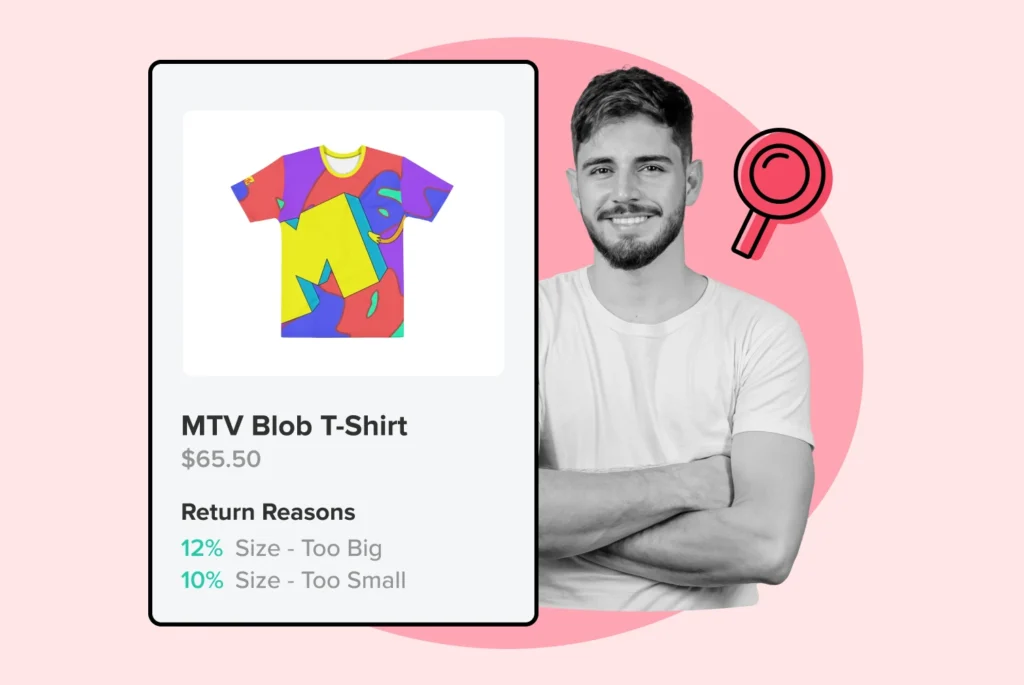
Understanding Customer Lifetime Value (CLTV)
Customer lifetime value (CLTV): Let’s navigate through its calculation & its profound implications for your marketing strategy & bottom line.
Boost customer experience and reduce support tickets
Realtime order and shipment tracking
Proactive order and shipping notifications
Predictive pre-purchase estimated delivery dates
Self-Serivce branded order tracking
Effortless experience delivered
Make returns profitable and delight customers
Flexibility to define any return destinations & conditions
Simplify returns for your customers and team
Incentivize exchanges over returns
Returns management made easy for your team
Understand why your customers are returning
Unify the online and the in-store experience
Hassle-free pickup experience for customers
In-Store Dashboard to keep operations streamlined
In-Store and Online orders unified
Drive foot-traffic to your stores
Boost customer experience and reduce support tickets
Realtime order and shipment tracking
Proactive order and shipping notifications
Predictive pre-purchase estimated delivery dates
Self-Serivce branded order tracking
Effortless experience delivered
Make returns profitable and delight customers
Flexibility to define any return destinations & conditions
Simplify returns for your customers and team
Incentivize exchanges over returns
Returns management made easy for your team
Understand why your customers are returning
Unify the online and the in-store experience
Hassle-free pickup experience for customers
In-Store Dashboard to keep operations streamlined
In-Store and Online orders unified
Drive foot-traffic to your stores
Find the answer to all your questions
Explore the most comon questions about WeSupply
Calculate the ROI that WeSupply can bring you
Request a no strings attached review of your current shopping experience and missed conversion opportunities
Take a step by step trip through our functionality to see how we can improve your ecommerce processes.
Read actionable articles on how to optimize your post-purchase experience and decrease support tickets
Get inspired by stories of how our customers implemented an effortless post-purchase experience
A Deep Dive into Top Companies' Order Tracking & Returns Strategy
Wondering if WeSupply is a good fit for you? Read through our use cases to see how we can help you increase conversion & improve CX!
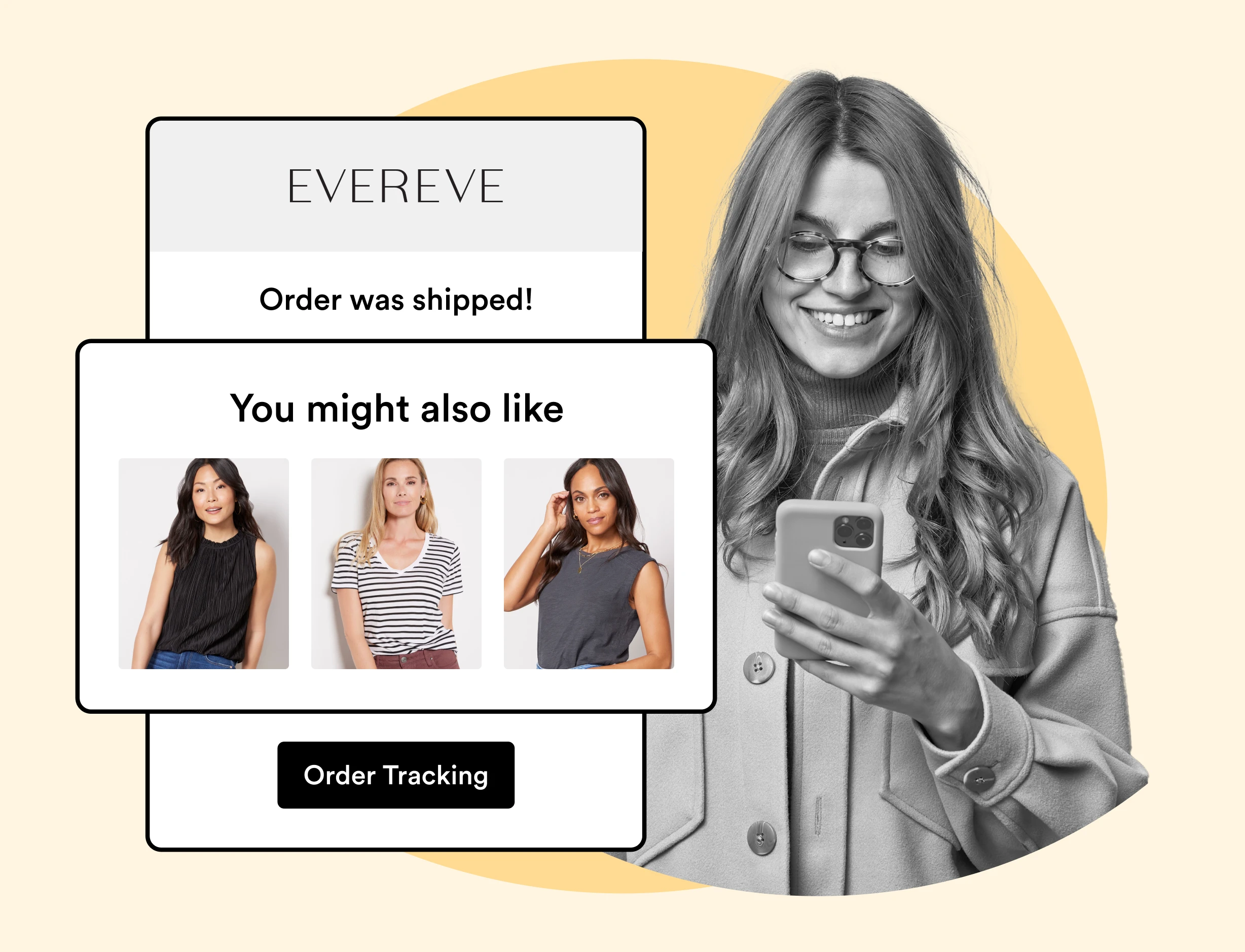
Understanding and enhancing customer lifetime value (CLV) is crucial for any business looking to maximize profits from each customer relationship. A strong CLV not only indicates reliable revenue streams but also reflects the success of your retention efforts over time. This article explores practical strategies to increase your CLV, arming you with the knowledge to calculate, analyze, and amplify this pivotal metric.
Customer Lifetime Value (CLV) is a critical metric in e-commerce, representing the total net profit a business generates from a customer over the duration of their relationship, guiding marketing and business growth strategies.
A high CLV indicates a strong product-market fit and brand loyalty, and strategies to enhance CLV include personalization, loyalty programs, re-engagement of inactive customers, and optimizing post-purchase experiences.
Emerging technologies such as AI and machine learning are shaping the future of CLV optimization, enabling businesses to better understand and predict customer behavior, and continuously adapting CRM strategies is essential for improving CLV.
WeSupply enhances customer lifetime value with its comprehensive approach to post-purchase management. Key features like incentivizing exchanges over refunds, automated and flexible return processes, and effective communication channels via email and SMS, streamline customer interactions. These strategies, coupled with seamless integrations, boost customer satisfaction and loyalty, driving repeat purchases and increasing overall business value.
CLV represents the total worth of a customer to a business over the course of their entire association with the brand. It encompasses the value derived from all transactions during the customer’s lifetime. This metric is crucial in the e-commerce landscape as it serves as a measure of customer loyalty and assists in minimizing acquisition costs.
The calculation of CLV allows businesses to calculate customer lifetime and:
Refine their marketing strategies for more efficient customer retention
Identify high-value customers and focus on retaining them
Allocate resources effectively to maximize customer lifetime value
Make data-driven decisions to improve customer experience and increase profitability.
Comprehending CLV plays a pivotal role in the growth strategy of a business by providing guidance on the investment required to sustain a customer relationship.
In the realm of e-commerce, CLV represents the total net profit a business generates from a customer over the duration of their relationship. A clear grasp of CLV enables businesses to distribute resources effectively, balancing customer acquisition costs and retention initiatives for optimal profitability.
CLV can be evaluated from historic and predictive perspectives, using the customer lifetime value formula, which is based on calculating customer lifetime, involving the average customer lifespan multiplied by customer value. While CV computes the value within a specific time period, CLV ascertains the value of a customer throughout their entire relationship with the company.
Understanding CLV helps businesses make informed decisions on:
Acquisition
Retention
Support
Product quality
Profitability
A well-understood CLV can result in strategic marketing approaches that enhance overall profitability. CLV assists businesses in ascertaining the true value a customer contributes throughout their lifetime, thus facilitating the creation of more efficient customer acquisition and retention strategies.
Furthermore, CLV offers insights into customer preferences and product usage, guiding product development and quality assurance teams for improved customer experience and loyalty.
The role of CLV in shaping business strategy is significant as it promotes a focus on customer retention, which is typically more cost-efficient than acquiring new customers. A high CLV signifies strong product-market fit, brand loyalty, and a consistent flow of recurring revenue from current customers, emphasizing their significance in driving a company’s revenue and profits.
Hence, effective communication is vital to bolster the relationship between the company and its customers, yielding increased repeat transactions and a higher CLV.
Analyzing CLV helps businesses identify valuable customers and opportunities for audience targeting through demographics and behaviors. Enhancing CLV can result in a substantial boost in a business’s profitability through the optimization of marketing strategies. It is worth noting that a mere 5% increase in customer retention can lead to a 25% to 95% improvement in profitability.
Higher customer retention rates indicate that customers are making repeat purchases, contributing to an increased CLV. Thus, understanding CLV allows marketers to tailor their messages to customer segments more effectively, resulting in improved conversion rates.
Achieving a balance in customer acquisition and retention costs is key to maximizing CLV and achieving overall business success. CLV is a reflection of the combined expenses associated with acquiring and retaining customers, encompassing both customer acquisition costs and customer retention rates. The balance between these costs can be achieved by applying the formula CAC = (total marketing and sales costs) / (number of new customers), with CAC needing to be lower than the CLV to prevent financial loss per customer.
Furthermore, customer segmentation allows the creation of personalized marketing campaigns, resulting in increased conversion rates and effective management of acquisition and retention costs.
WeSupply, a post-purchase solution, plays a crucial role in balancing the costs associated with customer acquisition and retention by maximizing the Return on Investment (ROI). This is achieved through streamlining the post-purchase experience, which not only enhances customer satisfaction but also encourages repeat business, thereby boosting the Customer Lifetime Value (CLV). By optimizing logistics and communication, WeSupply reduces operational costs and increases efficiency, making it a cost-effective strategy for businesses.
To understand the specific financial impact of WeSupply on your business, you can use the ROI Calculator, which provides a clear picture of the potential savings and revenue growth opportunities.
To boost CLV, it is necessary to put into action key strategies like:
Personalizing customer experiences
Establishing structured loyalty programs
Implementing win-back techniques for inactive customers
Optimizing post-purchase stages
Each of these strategies can be instrumental in driving customer satisfaction and loyalty, and consequently, increasing CLV.
Personalized customer experiences are central to greater engagement and higher CLV. From tailored product recommendations to personalized marketing messages, these strategies can strengthen customer relationships and enhance their overall experience. By examining customer interactions such as:
in-email clicks
pageviews
recent purchases
active carts
Businesses can identify inactive customers and develop targeted campaigns that align with their common interests.
The implementation of such personalized experiences can therefore significantly improve customer engagement and enhance CLV.
WeSupply leverages its innovative technology to enhance customer engagement by personalizing the post-purchase experience. Key Features include:
Branded Returns Portal: Simplifies returns with a branded, user-friendly interface, boosting customer loyalty.
Post-Purchase Notifications: Engages customers with high-open-rate email & SMS updates, providing personalized deals and eliminating the need for follow-up calls.
Combat inconvenience with proactivity & self service
Book a quick call with our experts to see how WeSupply can help you make returns easy for your customers with a beautiful, self-service solution that makes their experience easier while also providing new ways to lower costs and earn back revenue.
Discover how WeSupply can transform your customer’s post-purchase experience. Book a demo today and see the difference for yourself!
A well-structured loyalty program can be a powerful tool for increasing CLV. The program aims to:
Encourage repeat business by providing discounts or benefits as a reward
Create a loyal customer base and increase customer retention
Enhance the personalization of customer experiences
By providing customers with incentives for their continued loyalty, these programs can be highly effective in driving customer engagement and increasing CLV.
Companies like American Apparel and Sephora have demonstrated how these strategies can re-engage customers and drive repeat purchases, leading to an enhanced CLV.
Employing win-back tactics proves crucial in re-engaging dormant customers and enhancing CLV. By identifying inactive customers and implementing targeted messages, businesses can encourage these customers to re-engage and potentially boost their CLV through increased sales and revenue.
The use of exclusive promotions, special discounts, or personalized communications that align with the customer’s historical preferences and actions can motivate their re-engagement and reignite their enthusiasm for the brand, ultimately leading to heightened customer retention.
The optimization of post-purchase stages, like returns and exchanges, offers a way to transform potential losses into gains in customer satisfaction. By offering a seamless return process and addressing return concerns, businesses can deliver exceptional customer service and ensure comprehensive and accurate product information to reduce the occurrence of returns.
By streamlining the return and exchange processes, businesses can potentially:
Enhance the overall returns experience
Boost customer satisfaction
Foster customer loyalty
Increase repeat purchases
Improve customer lifetime value
WeSupply revolutionizes eCommerce by optimizing post-purchase phases, turning returns into strategic opportunities. Their self-service Returns Center reduces the average return rate by incentivizing exchanges with instant credit, streamlining the process for both businesses and consumers.
Key Features:
Self-Service Returns process that’s efficient and user-friendly, with just 3 simple steps for initiating returns.
Flexible Returns Rules to accommodate various scenarios, creating a customer-friendly return policy.
Autogenerated QR Code Return Labels for hassle-free returns without the need for printing.
Returns Tracking to keep customers informed about the status of their returned products.
Proactive Post-Purchase Email & SMS Notifications to maintain engagement and reduce the need for customer follow-ups.
Experience the transformative power of WeSupply in optimizing your eCommerce returns. Book a demo now and turn your returns process into a competitive advantage!
Just as Evereve leveraged WeSupply’s technology to revolutionize their returns management, your business can also transform challenges into growth opportunities. Facing high order and return rates in the fashion industry, Evereve integrated WeSupply with tools like Zendesk, Celerant, and Veeqo to automate and centralize returns. This shift not only reduced costs and customer service burdens but also improved accuracy and speed in the returns process. The new self-service model enhanced customer satisfaction and loyalty, while WeSupply’s analytics and automation optimized returns routing, further reducing costs and boosting productivity. This case study is a prime example of turning returns management into a strategic advantage.
Discover how Evereve transformed challenges into opportunities with WeSupply. Read the full case study for insights on revolutionizing returns management!
The construction of personalized offers depends on the utilization of data and proficient communication channels to craft customized customer interactions. By analyzing data on customer preferences, purchasing behaviors, and engagements with brands, businesses can craft comprehensive customer personas and implement personalized strategies that better resonate with individual customers or groups, potentially enhancing customer lifetime value (CLV).
Personalization, based on data, aids in segmenting customers according to their past behavior and formulating campaigns centered around common interests. Examining behavior data is a critical process in developing customer segments that can be utilized by businesses to customize their marketing, sales, and customer service approaches.
By analyzing customer data, including online behavior, demographics, and purchase history, businesses can craft pertinent and compelling advertisements that resonate with the intended audience. Businesses have the capability to utilize Amplitude to segment customers based on their past behavior and develop targeted campaigns that align with their common interests.
Utilizing various communication channels, such as email and SMS, can enhance customer engagement and increase CLV. Different channels serve different purposes, with email being more effective for addressing and retaining a wider audience, whereas SMS is more personalized and suitable for engaging with the most loyal customers and delivering brief, timely information or discounts.
Incorporating email and SMS in tandem strengthens customer relationships and drives sales, combining these channels to enhance customer communications and improve the overall customer experience.
WeSupply excels in enhancing customer satisfaction through effective communication channels like email and SMS. This proactive approach in sending post-purchase notifications, keeps customers informed and engaged. By providing timely updates on orders and returns, coupled with custom and personalized offers, WeSupply not only maintains continuous communication but also eliminates the need for follow-up calls, streamlining the customer experience.
Keep your customers engaged during the delivery experience
Book a quick call with our experts to see how WeSupply can help you engage your customers with relevant updates through the right channel, at the right time.
The creation of incentive structures within digital customer loyalty programs encourages repeat purchases and enhances customer retention. These structures incentivize customers for behaviors such as higher spend, engagement, and brand advocacy, fostering repeat purchases and heightened interaction with the brand.
Designing incentive structures drives repeat purchases and improves customer retention. Offering exclusive sneak peeks at new products to repeat customers or creating a tailored rewards system through an e-commerce loyalty program are proven techniques.
By incentivizing customers for behaviors such as higher spend, engagement, and brand advocacy, these structures foster repeat purchases and heightened interaction with the brand.
WeSupply expertly crafts incentive structures that encourage repeat purchases by focusing on promoting exchanges over returns. Their strategy involves offering instant store credit as a reward, enticing customers to choose this option over refunds. This approach not only saves sales but also increases the average order value. By automatically issuing store credits, gift cards, or coupon codes as refunds, WeSupply drives customers back to the product catalog, fostering a cycle of continuous engagement and building a trusting relationship with the customer.
Improving the post-purchase experience implies effective management of returns and exchanges, thereby converting potential losses into wins in customer satisfaction. By offering a seamless return process and addressing return concerns, businesses can deliver exceptional customer service and ensure comprehensive and accurate product information to reduce the occurrence of returns.
Best practices in managing returns and exchanges can improve customer experience and increase CLV. By providing accurate product information, ensuring secure shipping, offering options for exchanges or store credit, utilizing customer reviews for process improvement, understanding return laws, maintaining a clear return policy, automating returns, and potentially offering free returns in specific cases, businesses can enhance customer satisfaction.
WeSupply champions best practices in managing returns and exchanges by offering a comprehensive and flexible approach. Their system allows for custom return policies, giving businesses the power to decide on various aspects like return window lengths and approval processes. This adaptability is key in converting returns into exchanges, thus saving sales and increasing average order values.
Key Features:
Encouraging Exchanges Over Returns: Incentivizes exchanges with options like instant store credit, gift cards, or coupon codes.
CSAT and NPS Tracking: Tools for measuring customer satisfaction and net promoter score, essential for continuous improvement.
Automated Returns: Simplifies the return process, reducing time spent on manual handling, minimizing fraud, and decreasing human error.
Seamless Integration: Ability to connect with hundreds of third-party tools, ensuring a smooth experience for customers and cost savings for businesses.
Explore the full potential of WeSupply’s return and exchange solutions for your business. Book a demo now to see how you can streamline your processes and enhance customer satisfaction!
Incorporation of CLV into the overall business model facilitates:
The evaluation of business health
The making of strategic decisions guided by CLV insights
CLV provides a long-term outlook and financial sustainability
Facilitating enhanced customer retention
Efficient resource allocation
Informed choices regarding customer acquisition
CLV, CAC, and Cost to Serve are interconnected metrics that determine whether a business is losing money or making a profit. Understanding CLV is significant to the overall health of a business as it indicates:
Product-market fit
Brand loyalty
Recurring revenue from existing customers
The ability to improve customer experiences and retention.
The balance between CLV and CAC is crucial for profitability as it guarantees that the expense incurred in acquiring a customer (CAC) does not exceed the revenue generated from that customer throughout their lifetime (CLV).
Strategic decision-making based on CLV insights can help businesses optimize marketing campaigns, improve customer experience, and increase profitability. CLV impacts strategic decisions by influencing activities such as:
Customizing marketing campaigns
Efficiently distributing resources
Venturing into new markets
Deciding on acquisition expenditure
By analyzing customer interactions and inquiries, CLV insights can enhance customer support and evaluate customer personas, purchase histories, and behaviors to more accurately estimate CLV.
Emerging technologies and their influence on customer engagement and loyalty are among the future trends in CLV optimization. The emerging technologies influencing CLV optimization in the e-commerce industry encompass technologies for customer identification, engagement, and retention, as well as large-scale, data-driven pricing optimization using machine learning models.
New technologies, such as AI and machine learning, can help businesses better understand customer behavior and preferences, leading to improved CLV. AI and machine learning contribute to the enhancement of Customer Lifetime Value by:
Facilitating the identification of high-potential customers
Refining the precision in analyzing and forecasting CLV
Providing businesses with a competitive advantage in elevating CLV.
Predictive analytics is employed to enhance the CLV by providing projections of potential revenue from customers over the course of their association with the company.
Predicting the future of customer engagement and loyalty involves staying up-to-date with industry trends and continuously adapting strategies to enhance CLV. Changes in consumer behavior, including modifications in their lifestyle and preferences, will have a substantial impact on customer engagement in the future.
Research has demonstrated that even a slight improvement in customer satisfaction can lead to substantial increases in CLV.
The pursuit of continual CLV improvement involves the steady progression of customer relationship management and the adjustment to changing customer needs and preferences. The ongoing evolution of customer relationship management (CRM) plays a significant role in improving customer lifetime value (CLV) by refining and strengthening the strategy for greater effectiveness.
To enhance continuous CLV, businesses can implement recommended strategies such as:
Cross-selling and upselling
Investing in customer care
Creating loyalty and referral programs
Collecting and acting on consumer feedback
Personalizing the customer experience
Focusing on retention
Optimizing pricing
Leveraging data and analytics.
The ongoing evolution of customer relationship management (CRM) and its influence on CLV cannot be overlooked. The term customer relationship management (CRM) was coined in the 1980s, although the practice of managing customer data has roots dating back much earlier.
By utilizing technology to gain deeper insights into customers and establish a meaningful connection, businesses can cultivate brand loyalty and enhance CLV.
In conclusion, understanding and improving CLV is pivotal for every e-commerce business. By leveraging data for personalized interactions, implementing a well-structured loyalty program, and employing effective communication channels, businesses can significantly improve their CLV. Strategic decision-making based on CLV insights can aid businesses in optimizing marketing campaigns, improving customer experience, and increasing profitability. As technology evolves, businesses need to stay up-to-date with the latest trends in CLV optimization, always striving to enhance the customer experience and loyalty.
WeSupply offers effective strategies to increase customer lifetime value through a suite of tools designed to optimize the post-purchase experience. Key features include a self-service eCommerce Returns Center, incentivizing exchanges over returns with instant store credit, and proactive communication via email and SMS with high open rates. Flexible return policies and automated returns processes reduce time and effort, while seamless integrations ensure a smooth customer experience. By encouraging repeat purchases and managing returns and exchanges efficiently, WeSupply not only enhances customer satisfaction but also significantly boosts the average order value and customer loyalty.
To calculate customer lifetime value (CLV), use the formula (Average Revenue per User * Gross Margin) / Churn Rate, which favors higher ARPU and gross margin, as well as a lower churn rate. This will give you the value of a customer to your business over the course of their relationship with your company.
Customer lifetime value (CLV) is a metric used to measure the total revenue a business can expect from a customer over the course of their relationship, taking into account factors like repeat purchases and the duration of the relationship. It helps assess the long-term value of a customer to the company.
WeSupply incentivizes exchanges over returns by offering instant store credit. This approach encourages customers to continue shopping, boosting sales and increasing the average order value.
WeSupply utilizes proactive email and SMS notifications to keep customers informed about their orders and returns. These communications have a high open rate, fostering ongoing engagement.
By streamlining the returns process, offering flexible solutions, and maintaining effective communication, WeSupply significantly enhances customer satisfaction and loyalty, leading to increased customer lifetime value.

Learn How To Create Successful Post Purchase Email Campaigns
Build an effective post-purchase email flow that helps you increase customer satisfaction and drive revenue growth!

Customer lifetime value (CLTV): Let’s navigate through its calculation & its profound implications for your marketing strategy & bottom line.
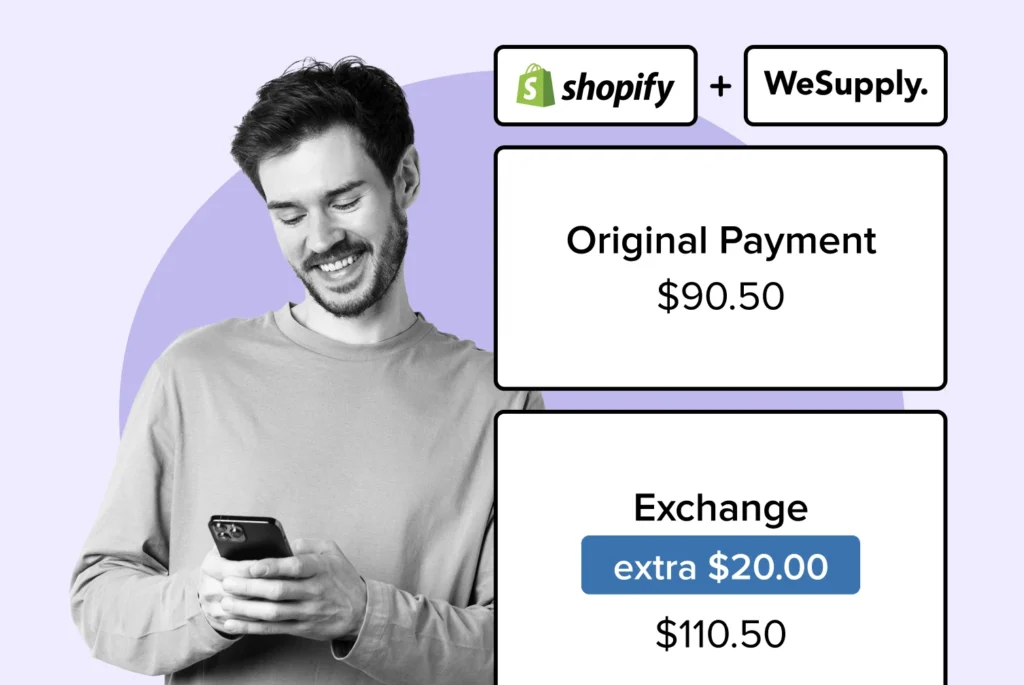
This article dives into the how-to of managing exchanges within your Shopify store, offering practical tactics and key insights.
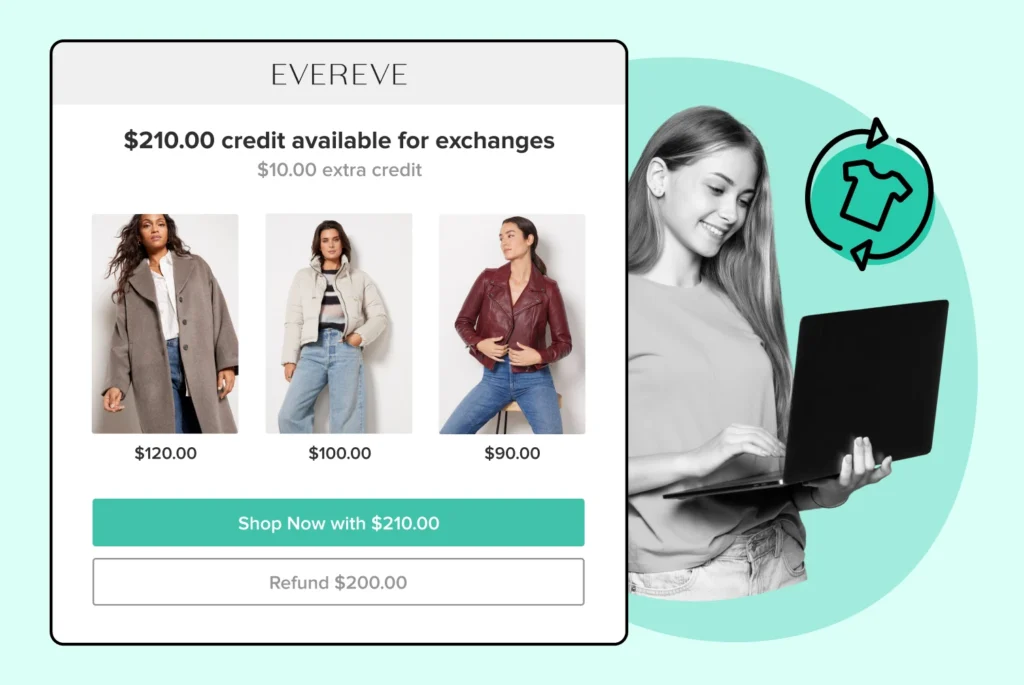
Learn how upgraded exchange processes can reduce costs, conserve resources, and transform customer returns into new purchasing opportunities.
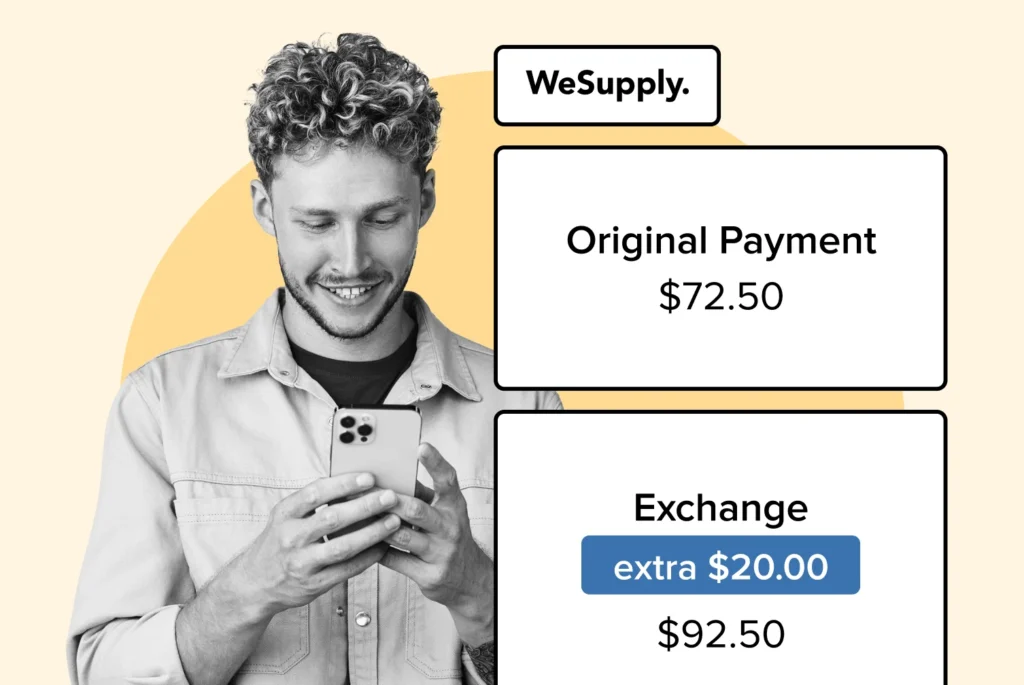
This article lays out proven strategies to optimize your e-commerce exchange policy, reduce return rates, and enhance customer satisfaction.
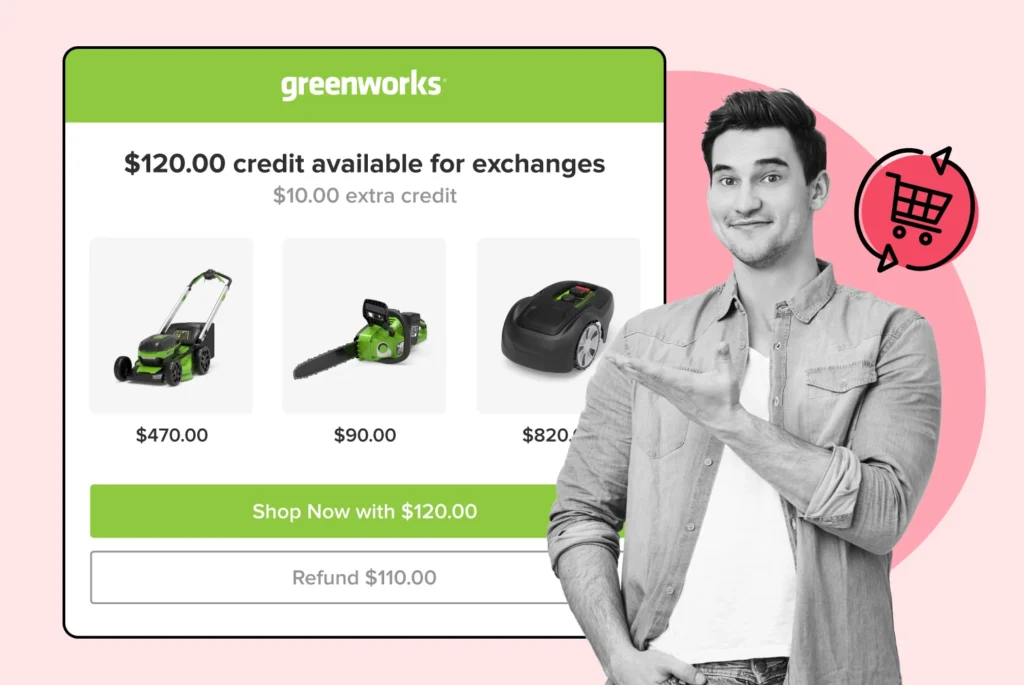
Let’s explore the mechanics, benefits, and integration strategies of instant exchange systems that can take your business to the next level.
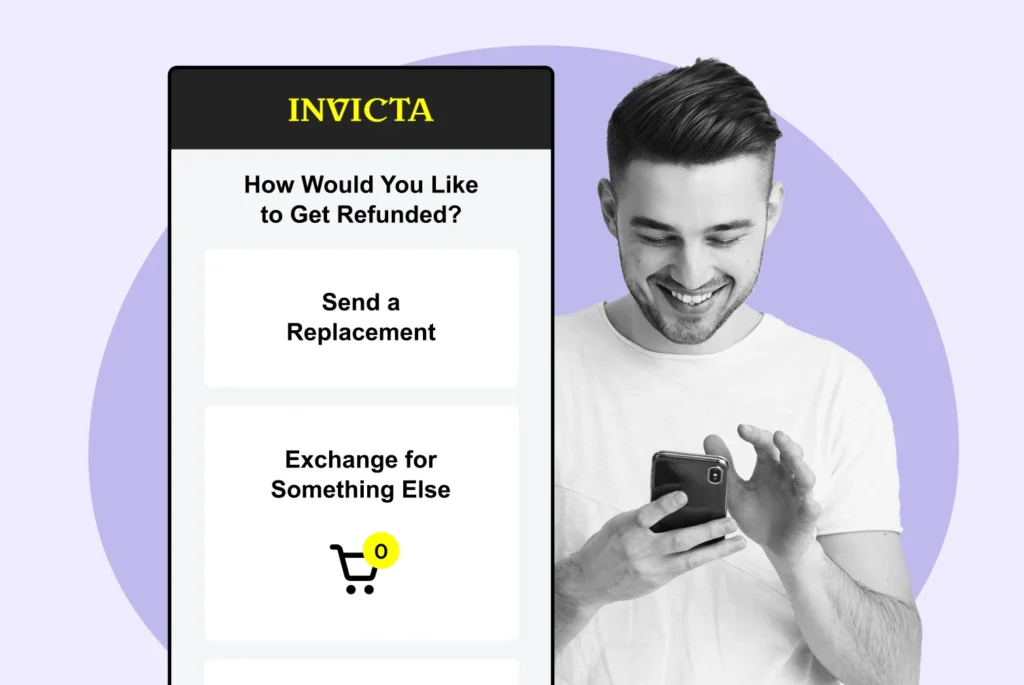
Offer tailored shopping experiences to unlock the power of personalization and propel your e-commerce business to new heights.
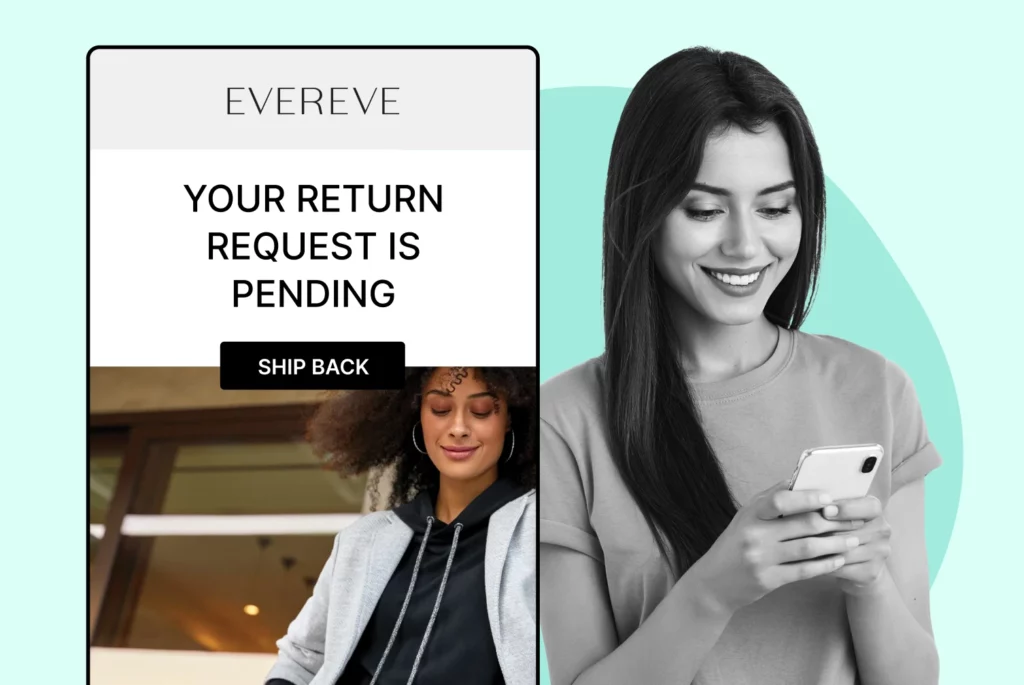
Let’s explore e-commerce returns: factors influencing customer satisfaction, return process streamlining strategies, and future trends.
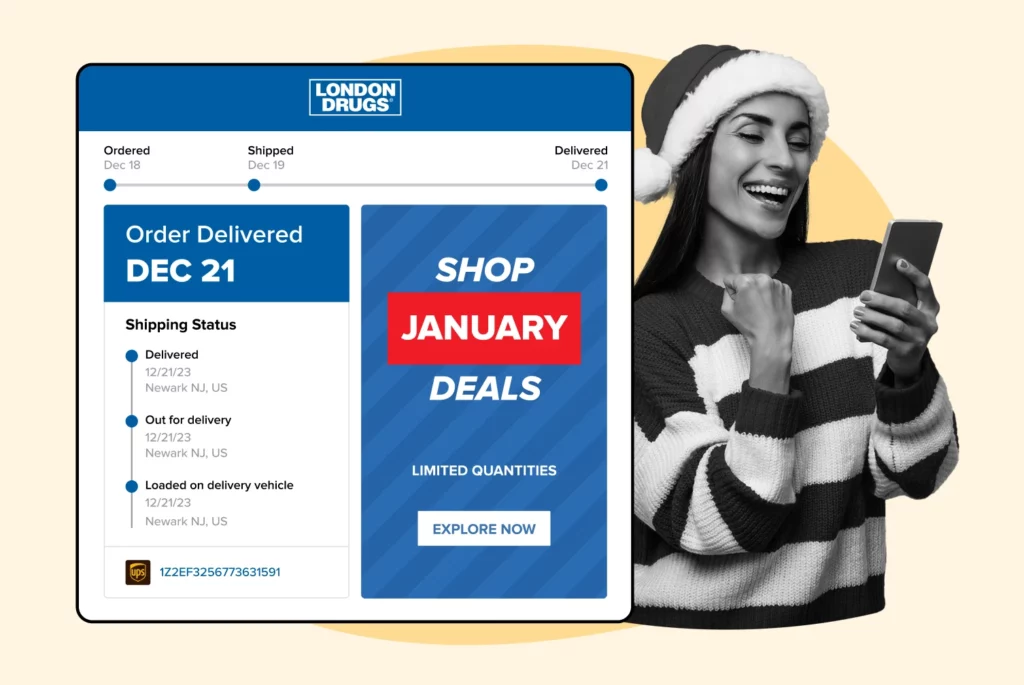
Build a consistent, year-round relationship with your clients, ensuring they stay engaged with your brand no matter the season!
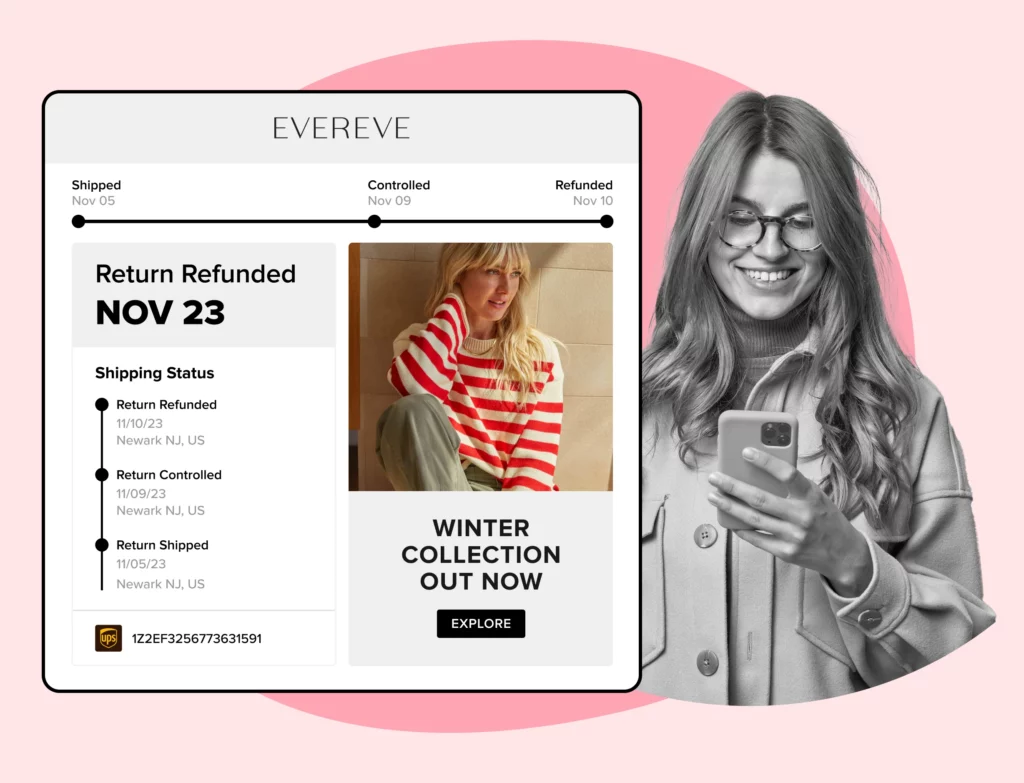
Explore the various strategies that can help your eCommerce business achieve remarkable customer satisfaction.